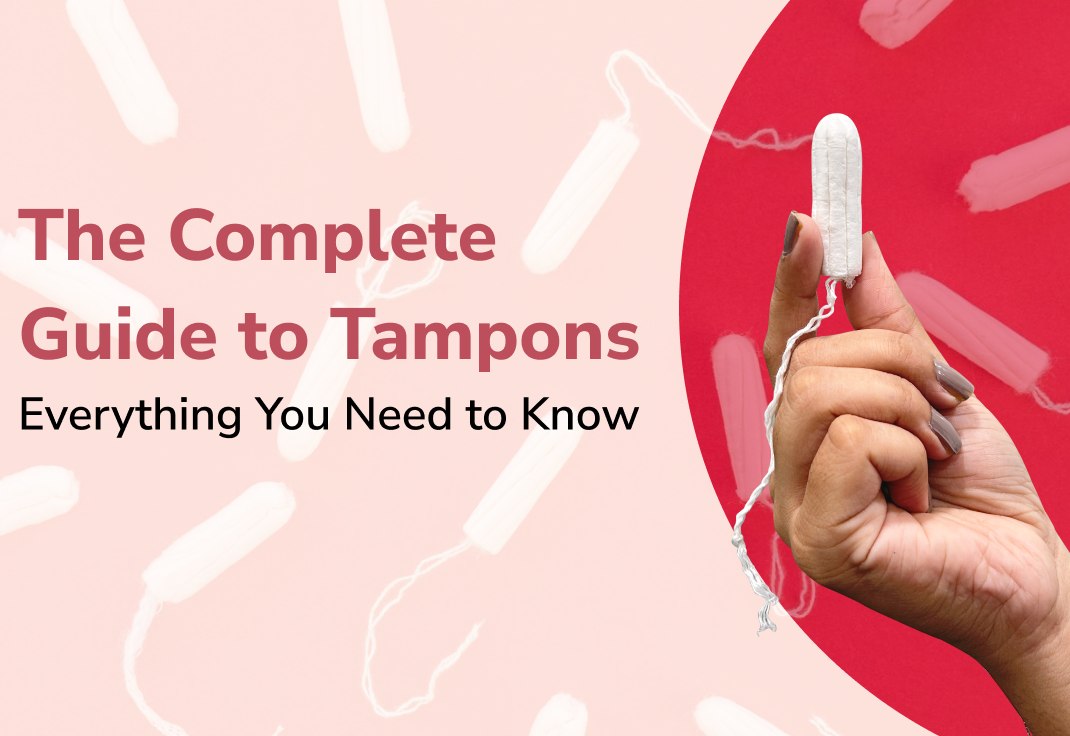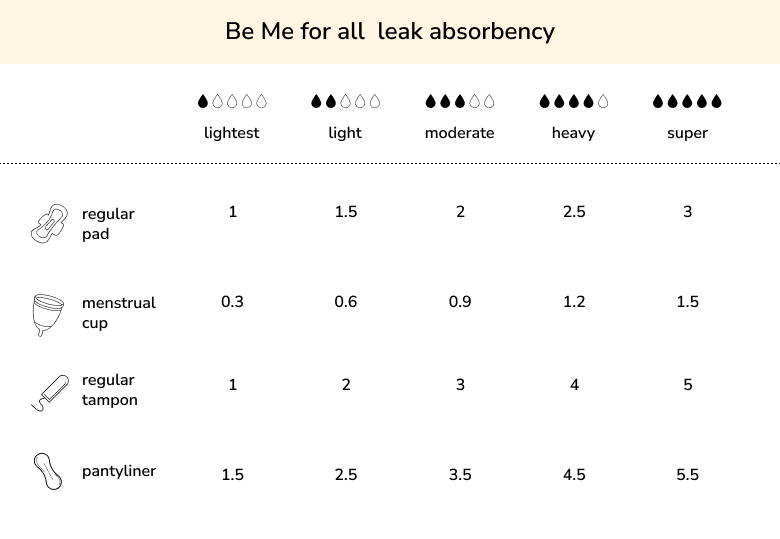
The Complete Guide to Tampons: Everything You Need to Know
Published At
When it comes to menstrual products, tampons are a unique and increasingly popular choice among women looking for comfort, convenience, and eco-friendliness. A regular tampon is a type of tampon that doesn't require an applicator, which means you insert it using your fingers. Though less talked about compared to other menstrual products, regular tampons provide a simple yet effective solution for period care.
In this comprehensive guide, we'll dive deep into everything you need to know about tampons, from their benefits and how to use them to safety tips and environmental impact.
What is a Regular Tampon?

A regular tampon is a tampon that is inserted manually, using your fingers, rather than with an applicator. These tampons are typically made of materials like cotton or rayon and are designed to absorb menstrual fluid. They function in the same way as other tampons by expanding to absorb menstrual blood but without the need for an applicator.
Regular tampons offer a simpler, more compact alternative to tampons with applicators, making them an eco-friendly choice for those looking to reduce their environmental footprint. They also provide a more intimate and direct way to manage menstruation, as users can have more control over the insertion process.
How to Use a Tampon

Using a tampon might seem a little unfamiliar at first, especially if you're accustomed to tampons with applicators, but it’s relatively simple once you get the hang of it. Here’s a step-by-step guide to using regular tampons:
1. Wash Your Hands: Before handling any menstrual product, it’s important to wash your hands with soap and water to avoid introducing bacteria.
2. Remove the Tampon from its Packaging: Unwrap the tampon carefully, making sure not to touch the tampon with dirty hands.
3. Get in a Comfortable Position: You can insert the tampon while standing, sitting, or squatting, depending on what feels most comfortable for you.
4. Insert the Tampon: Hold the tampon at the string end with your fingers (usually the index and middle fingers) and gently insert it into the vaginal canal. Aim towards your lower back, and push it in until it’s comfortably placed inside.
5. Ensure Proper Placement: The tampon should be positioned far enough inside that you can’t feel it. The string should be hanging outside of your body, allowing easy removal later.
6. Wash Your Hands Again: After inserting the tampon, wash your hands thoroughly to maintain hygiene.
Removing the tampon is similar to insertion. Pull the string gently, and the tampon will slide out. It’s essential to change your tampon every 4–6 hours to avoid health risks like Toxic Shock Syndrome (TSS).
Benefits of Using Tampons
While tampons are not as widely discussed as their applicator counterparts, they have several key benefits that make them an attractive option for many users. Here are some of the main advantages:
1. Eco-Friendly
One of the biggest benefits of tampons is their eco-friendliness. Because they don’t come with an applicator, there is significantly less plastic waste involved in their production and disposal. This makes tampons a more environmentally conscious choice for those looking to reduce their carbon footprint.
2. Cost-Effective
Without the need for an applicator, regular tampons are often more affordable. Over time, using regular tampons can save you money, especially if you are already trying to be more mindful of your expenses.
3. More Control and Comfort
Many users find that tampons give them more control over the insertion process. Because you insert them manually, you can feel more in tune with the tampon’s placement and make sure it’s positioned for maximum comfort. This can be especially helpful for those who are more sensitive or have trouble with applicator tampons.
4. Compact and Discreet
Since regular tampons don’t require an applicator, they are generally smaller and easier to carry around. Whether you're traveling or need a discreet option, these tampons are compact and can easily fit in a small bag or pocket.
5. Less Risk of Irritation
Some people experience irritation from the plastic or synthetic materials used in tampon applicators. tampons, however, are typically made from softer, more natural materials like cotton or rayon, which can be gentler on sensitive skin and reduce the risk of irritation.
How Do Tampons Compare to Other Menstrual Products?

While tampons have their unique benefits, they are not the only menstrual products available. It’s important to understand how they compare to other options like pads, menstrual cups, and tampons with applicators.
Pads vs. Tampons: Pads are an external product that sits on your underwear to absorb menstrual flow, while regular tampons are inserted into the vagina. Tampons provide more freedom and are less bulky than pads, making them ideal for sports and other activities. However, pads may be more comfortable for those who prefer not to insert anything internally.
Menstrual Cups vs. Tampons: Both menstrual cups and regular tampons are insertion based products, but menstrual cups are reusable and can hold more fluid than tampons, making them a good option for those with a heavy flow. However, tampons are more compact and easy to carry, whereas menstrual cups require proper cleaning and maintenance.
Tampons with Applicators vs. Regular Tampons: Tampons offer more control over insertion, as they are inserted manually. In contrast, tampons with applicators offer convenience and are easier for beginners to use. Applicator tampons can sometimes be more difficult to dispose of due to the plastic, whereas regular tampons are more eco-friendly.
Are Tampons Safe?
Yes, tampons are generally safe to use as long as you follow proper hygiene practices. Here are a few safety tips:
1. Change Regularly: Changing your tampon regularly is one of the most important steps in ensuring safety. It's recommended to change a regular tampon every 4-6 hours, as leaving it in too long can increase the risk of Toxic Shock Syndrome (TSS). TSS is a rare but serious bacterial infection that can occur when tampons are left in for too long, especially if they are highly absorbent. By changing your tampon regularly, you not only reduce the risk of TSS but also maintain better comfort and hygiene.
2. Use Clean Hands: Before inserting or removing a regular tampon, make sure to wash your hands thoroughly with soap and water. This step is crucial to avoid introducing bacteria or germs into the vaginal area, which could lead to infections. Using clean hands minimizes the risk of bacterial contamination and ensures a safer and more hygienic experience when handling the tampon.
3. Choose the Right Absorbency: Tampons come in different absorbency (light, regular, super, etc.), and it’s important to choose one that matches your flow. Using a tampon with too high absorbency for a light flow can increase the risk of TSS, as it may cause the tampon to stay in place longer than needed and absorb more than necessary, which can lead to bacterial growth. On the other hand, using a tampon with too low absorbency for a heavy flow may not effectively manage leakage. Always choose a tampon that suits your flow to ensure both comfort and safety.
4. Avoid Wearing Overnight: It’s recommended to avoid wearing a tampon overnight for more than the recommended time (usually 8 hours). While tampons are designed for day use, wearing them overnight for long periods increases the risk of TSS. If you need protection overnight, it’s safer to opt for pads or a menstrual cup, as these products are designed for longer wear and generally have less associated risk of TSS.
Frequently Asked Questions
1.Wash your hands thoroughly.
2. Unwrap the tampon and hold it at the string end with your fingers.
3. Get into a comfortable position (standing, sitting, or squatting).
4.Gently insert the tampon into your vaginal canal using your fingers. Aim towards your lower back and push it in until it’s comfortable.
5. Make sure the tampon is fully inserted, and the string is hanging outside for easy removal.
Conclusion
Regular tampons offer a practical, eco-friendly, and comfortable alternative to other period products. They provide more control and comfort during insertion, are more compact and discreet, and are gentler on the environment due to the lack of an applicator. While regular tampons might require a little practice for beginners, they are a great option for those who want a cost-effective, eco-friendly, and convenient solution for managing their period. If you're interested in making the switch or want to try something new, regular tampons could be the perfect addition to your menstrual care routine. Try them out and see how they work for you!









